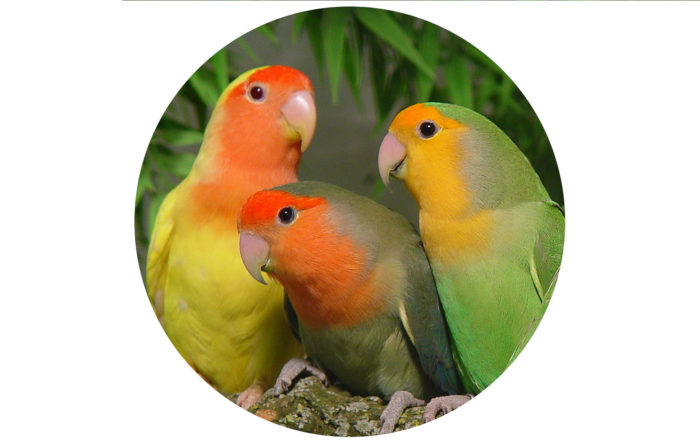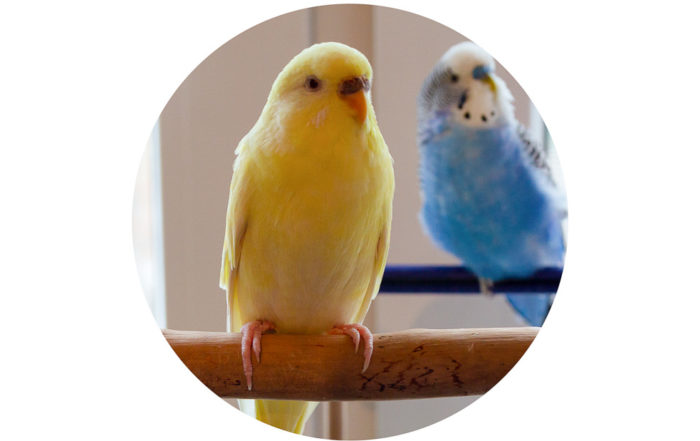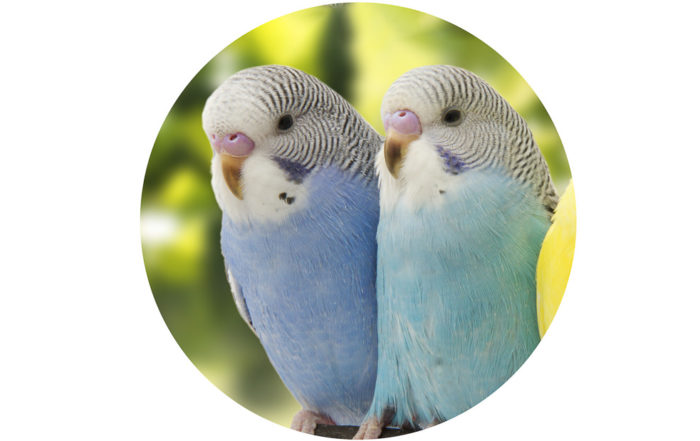Mites – Recognising and Avoiding Infestation in Budgies, Canaries, and Finches
We’ve taken an in depth look at the different diseases that affect kept birds in our blog about parrot welfare, and many of these conditions and their symptoms can be extended to Budgies, Canaries and Finches. But one subject we’ve haven’t covered is mites.
Mites are microscopic parasites that live on the skin and among the features of birds, feeding on their blood. They are eight-legged arachnids, so are related to ticks and spiders, and are only active at night. They are of particular concern to budgie and canary owners and are usually passed on via contact with an infected bird.
There are three types of mite that as an aviary bird owner, you need to watch out for. These are scaly face mites, skin and feather mites, and air sac mites. If left untreated, each of these have the power to leave your pets very unwell indeed, or worse, so let’s take a closer look at each in turn.
Scaly Face Mites
Scaly face mites live on patches that don’t have any feathers, so symptoms of an infestation are observed first on the face, hence the name. They’re also called Budgie mites because of their propensity to affect Budgerigars.
Early symptoms present as a thickening crust around the cere and around the bill. As the condition worsens, the crustiness can extend to the vent, legs and feet, resulting in the loss of claws and lameness.
As well as the physical signs, birds with scaly face mites often start to swipe their bill and refuse to eat as the bill is too sensitive. Inevitably, this leads to a loss of condition.
If the bird does not receive treatment at this point, it can succumb to secondary infections which could prove fatal.
Skin and Feather Mites
Skin and feather mites are less common in aviary birds than other species, particularly commercial-raised chickens where they are called red mites, due to their colour.
However, if your Budgie, Canary or Finch does get them, they can cause real problems.
During a heavy infestation, these mites can suck enough blood to actually make a bird anaemic – a condition they would struggle to recover from.
Also, skin and feather mites don’t spend all of their time on the host bird and in the daylight hours actually retreat to the dark corners of the enclosure or aviary, and then return to the host at night.
This means that as well as treating the bird, cages, enclosures and aviaries all have to be treated too, to ensure the infestation doesn’t return.
Symptoms include lethargy during the day and constant itching at night when the mites return to the host bird.
A particularly heavy infection can be fatal as the mites suck more blood than the birds can stand to lose.
Air Sac Mites
Air sac mites are most prevalent among small passerine birds, so owners of Canaries and Finches need to be particularly on guard against these irritating little parasites.
They live in the air sac or trachea of the host, as it is warm, moist and they are protected against predators.
Symptoms of infestation are more obvious than other types of mite. Because the mite affects the airways, the bird develops breathing difficulties and may start to wheeze, cough and sneeze. A nasal discharge can also develop.
In severe cases, the infestation can get so bad it blocks the trachea and suffocates the bird, or else the bird becomes so ill it refuses to eat and rapidly loses condition.
As with other types of mite, infestations tend to be passed on by contact with an infected bird.
What to Do if You Think Your Bird Has Mites
If you observe any of the symptoms above, it is essential you take your bird to the vet as soon as you can. Your vet will be able to tell you if it is indeed a mite infestation your bird is suffering from, the type of mites, and provide treatment options that should see your pet back to full health in no time at all.
However, there are a number of things you can do to prevent getting mites in the first place. These include:
Avoid Contact With Unknown Birds
As mites tend to be spread by contact with infected birds, it stands to reason that if your birds have little or no contact with other birds, the chances of contracting mites is considerably reduced.
For most pet owners, this isn’t a problem. However, for birds exhibited at shows there is always a risk of cross infection. If you think there is a chance one of your birds might have been in contact with an infected bird, quarantine it and watch for the development of any symptoms.
If any of your birds come into contact with wild birds, also quarantine them and watch out for symptoms. Although it is less likely they would be infected by a wild bird, they can be a source of mites, particularly during the nesting season.
Practice Good Cage and Aviary Hygiene
There is no excuse for not regularly cleaning out your bird’s enclosure, regardless of how big it is.
The fact is, your birds spend most of their time in their enclosures, spilling food, defecating, preening and generally making a mess. Without regular cleaning, infection can soon take hold and have a devastating impact.
There are many bird friendly disinfectants on the market, many approved by DEFRA, which means you can sterilise your cage or aviary without any adverse effects on your pets.
As a general rule, you should clean feed and water bowls every day, clean the floor weekly, scrub the enclosure, perches and accessories every two weeks, and disinfect the whole enclosure once a month.
Don’t Handle Young Wild Birds
Bird mites are often found around nesting sites of wild birds. If you see a young bird that has fallen out of the nest, it can be tempting to pick it up and hand raise it. But this is a potential source of infection for your pet birds.
Leave the bird alone as the chances are its mother will know where it is and will be feeding it. If you do come into contact with wild birds, make sure you wash thoroughly before engaging with your aviary birds.
Finally, in the event of a heavy infestation in your aviary, consider calling in a pest control expert to ensure it is fully dealt with. Some mite colonies – particularly skin and feather mites – have been shown to be resistant to conventional pesticides and disinfectants, so whereas these might reduce numbers in the short term, there will be enough mites left to re-infest your aviary and therefore you flock.
Having your aviary treated by a professional pest controller who knows about mites is often the best way to deal with a heavy infestation.
Treating a Mild Case
If you suspect a mild case of mites, there are off-the-shelf products you can buy to treat this. You should be able to find these at your local pet shop or supermarket, or at your vet surgery.
If, after applying the treatment, the problem doesn’t improve, or you suspect a heavy infestation, then go straight to see your vet as this may call for a more drastic form of treatment.
Our Recent Posts Giving Advice and Guidance on Aviary Birds
What’s Not to Love About the Colourful Lovebird?
Reading Time: 12 minutes Sometimes referred to as ‘pocket parrots’ due to their size, they are colourful, charming characters that can make adorable pets. With a name like Lovebird, it’s not surprising these are among the most popular small parrots to own.
How to Tame (Train!) Your Budgie
Reading Time: 10 minutes One question we get asked fairly often is how to tame a Budgie. We’ve always found this a bit of a strange enquiry because like most birds that live in flocks in the wild, Budgies are very sociable and enjoy human company. As such, they don’t need to be tamed per se.
Budgies – the UK’s Favourite Pet Bird
Reading Time: 6 minutes Budgies – also known as parakeets – are the most popular companion bird in the UK and it is easy to see why. These colourful little birds are every bit as intelligent as their bigger cousins, but at just seven or so inches in height, they take up much less room than an African Grey or ...











Leave A Comment